Dezeen School Shows: a project promoting education about the environment through material interaction is included in Dezeen’s latest school show by students at Zurich University of the Arts.
Also included is a project exploring the recycling of devices through the preservation of digital data and an immersive app to enhance museum and exhibition experiences.
Institution: Zurich University of the Arts
School: Zurich University of the Arts
Courses: Industrial Design and Interaction Design
Tutors: Dr Joëlle Bitton, Prof Dr Karmen Franinovic, Sandra Kaufmann, Dr Roman Kirschner, Susanne Marti, Mona Neubauer, Lisa Ochsenbein, Prof Jürgen Späth, Rasa Weber, Hanspeter Wirth and Paulina Zybinska
School statement:
“Today’s industrial and interaction designers are facing major technological, ecological and societal challenges.
“Traditional system boundaries are becoming inadequate, shifting the focus from humans alone to the planet and all its interconnected parts.
“Our graduates have tackled a number of pressing issues with a holistic approach, leveraging their acquired knowledge, skills and creativity to develop promising solutions.”
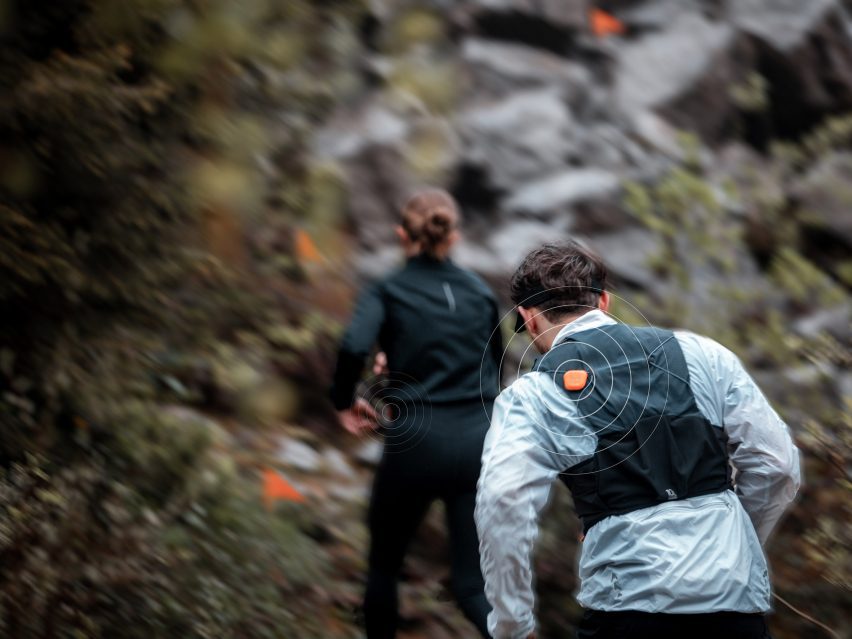
Magic Timing System (MTS) – Time-Measuring and Live-Tracking of Athletes by Nicolas Desarzens
“Measuring the time at events such as marathons comes with a significant use of material, staff and time, as well as costs.
Every sports event requires individual solutions.
“The lightweight, easy-to-fit transponder technology ‘MTS’ responds to this need.
“It is suitable for many different kinds of sport, providing precise results and offering athletes and event organisers a high level of convenience.”
Student: Nicolas Desarzens
Course: Bachelor Industrial Design
Tutors: Susanne Marti and Lisa Ochsenbein
Email: desarzensn[at]gmail.com
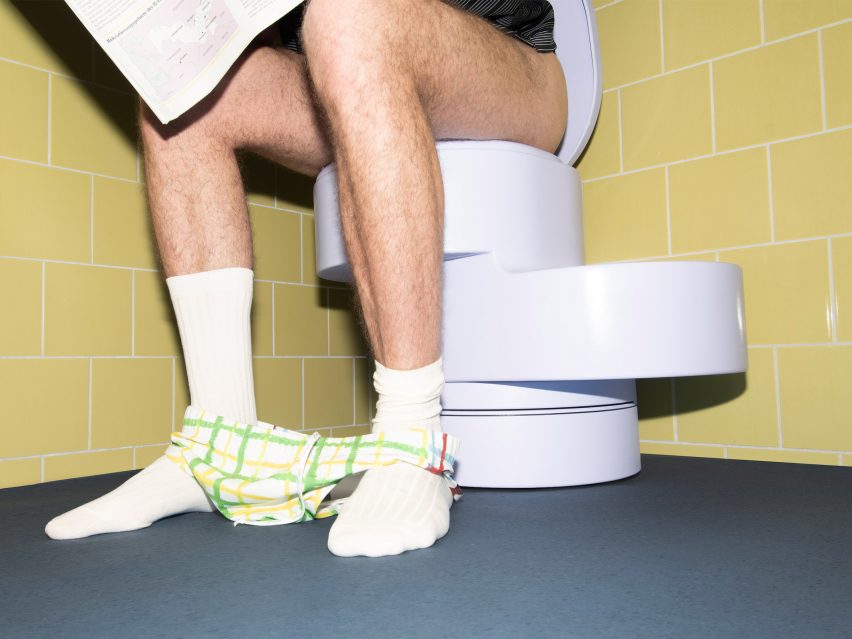
Doppelnull – Utilising the Potential in the Bowl by Delia Gregori and Julian Gisler
“The Swiss sanitation system is linear, geared at waste disposal and unsettles the natural balance of the cycle of matter.
“The toilet ‘Doppelnull’ (‘double zero’) treats human waste as a valuable resource.
“Inspired by the shift towards sustainable sanitation, the design invites us to rethink something commonplace as part of a circular system.”
Students: Delia Gregori and Julian Gisler
Course: Bachelor Industrial Design
Tutors: Sandra Kaufmann and Hanspeter Wirth
Emails: delia.gregori[at]hispeed.ch and julian.gisler[at]bluewin.ch
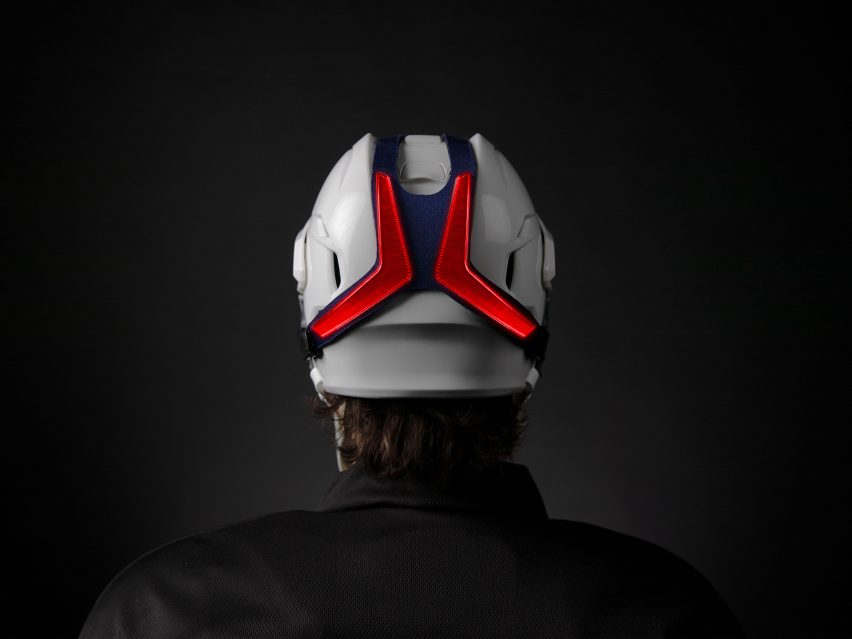
BrainBuddy – Improved Head Safety for Junior Ice Hockey Players by Lukas Grauwiler
“Concussion is a real hazard for ice hockey players – for years, clubs and associations have been called upon to mitigate their severity.
“BrainBuddy is an LED system that can be fitted on the helmet.
“It uses visual stimuli to warn players of impending collisions during training, which minimises the impact of collisions and increases awareness of danger zones.”
Student: Lukas Grauwiler
Course: Bachelor Industrial Design
Tutors: Sandra Kaufmann and Hanspeter Wirth
Email: l.grauwiler[at]gmail.com
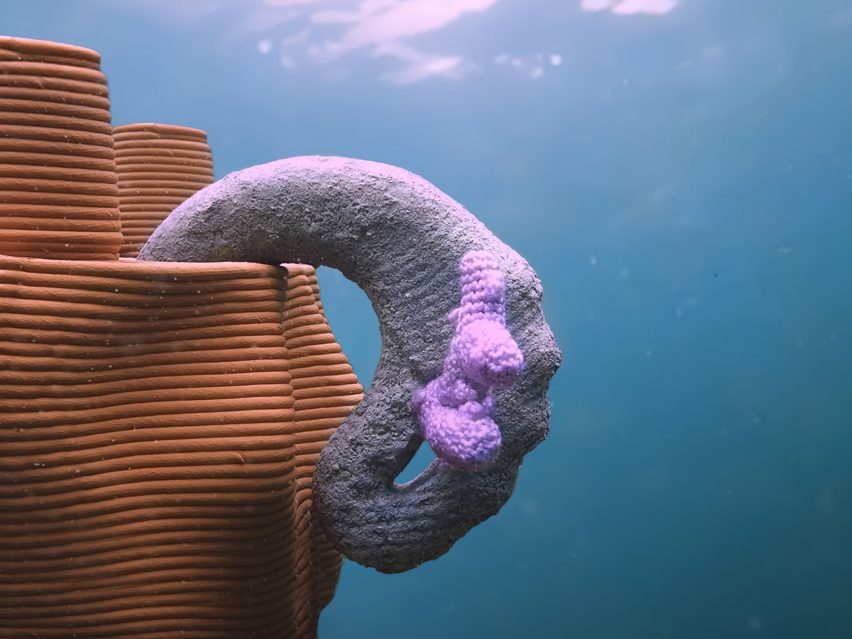
Corallum – Life Under Water – New Methods of Coral Restoration by Emilia Lendi
“Coral reefs are dying worldwide because of climate change – with fatal results for the marine ecosystem and humans.
“The coral restoration module Corallum expands artificial reefs.
“It provides an ideal basis for rearing corals and creating a permanent habitat for them.”
Student: Emilia Lendi
Course: Bachelor Industrial Design
Tutors: Susanne Marti and Lisa Ochsenbein
Email: lendiemilia[at]gmail.com
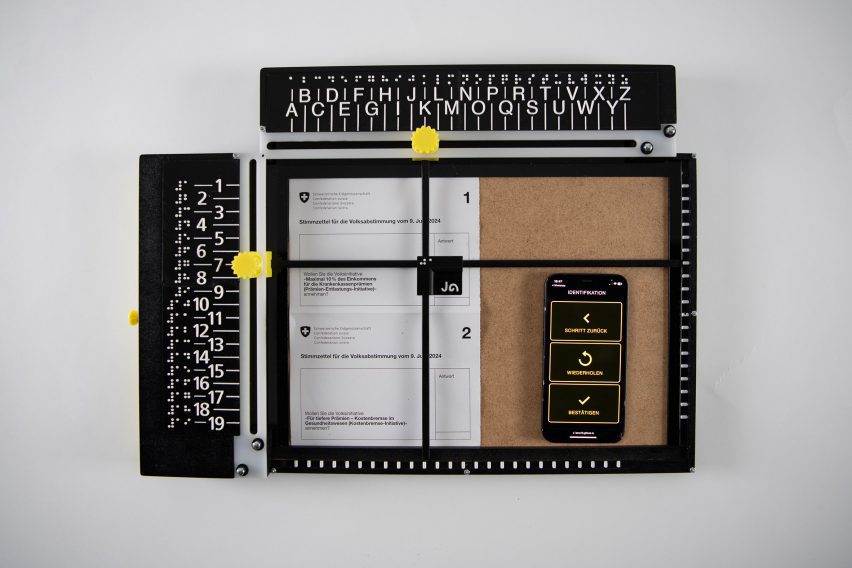
Selbstbestimmt – Autonomous voting for blind people by Luis Praxmarer and Lars Ziegler
“Selbstbestimmt (‘self-determined’) is a project for improved democratic participation of blind people.
“Currently, it is impossible for them to vote autonomously due to the lack of haptic features on the voting documents.”
Students: Luis Praxmarer and Lars Ziegler
Course: Bachelor Interaction Design
Tutors: Dr Roman Kirschner and Mona Neubauer
Emails: luis.prax[at]icloud.com and hi[at]larsziegler.ch
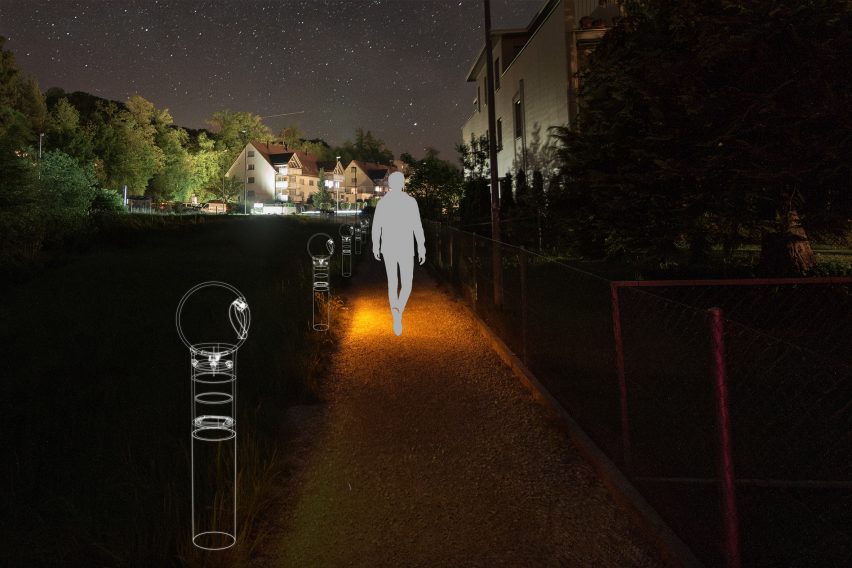
Lumina – Sustainable Lighting for Natural Habitats by Loïc Hommel
“In recent decades, the rapid increase in artificial light has turned night into day, disrupting ecosystems that rely on darkness.
“Lumina addresses this issue by focusing on pedestrian pathways often illuminated by standard streetlights that contribute to light pollution – offering customisable, non-static lighting solutions tailored to different nocturnal environments and their unique challenges.
“The device features a number of solutions to provide light where needed for humans, while minimising disruption for insects and other organisms.
“Adaptive lighting based on environmental conditions minimises the impact of artificial light at night, fostering a harmonious relationship between us and our nocturnal environment.”
Student: Loïc Hommel
Course: Bachelor Interaction Design
Tutors: Dr Roman Kirschner and Mona Neubauer
Email: loicho2012[at]gmail.com
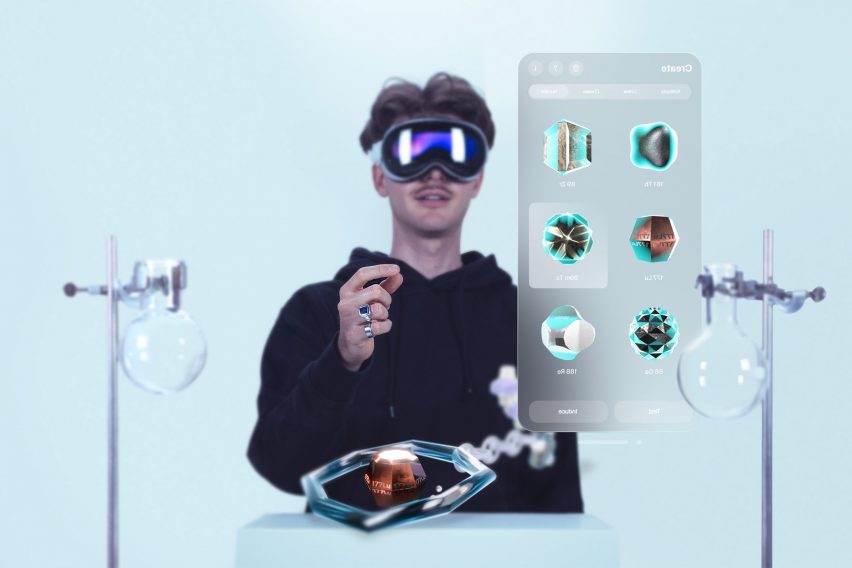
On Radar – Encounter Radiotracers on Apple Vision Pro by Audrey-Meret Lohmann and Lukman Ascic
“On Radar is a spatial computing app designed for Apple Vision Pro.
“Tailored to the museum and for exhibition, young visitors encounter medicinal radiochemistry in an immersive space where virtual chemical components blend with real-world surroundings.
“They discover, observe and learn inputs in their purest form – our eyes and hands.
“On Radar brings cutting-edge research closer than ever for the future students we hope to inspire.
In dialogue with specialists from nuclear medicine, scientific communication and education, spatial interaction and visualisation methods were incorporated to simplify complex matters, the result is a simplified structure that allows young visitors to unlock their curiosity.
Students: Audrey-Meret Lohmann and Lukman Ascic
Course: Bachelor Interaction Design
Tutors: Prof Jürgen Späth and Paulina Zybinska
Emails: audrey.lohmann[at]icloud.com and lukman[at]lukmanascic.ch
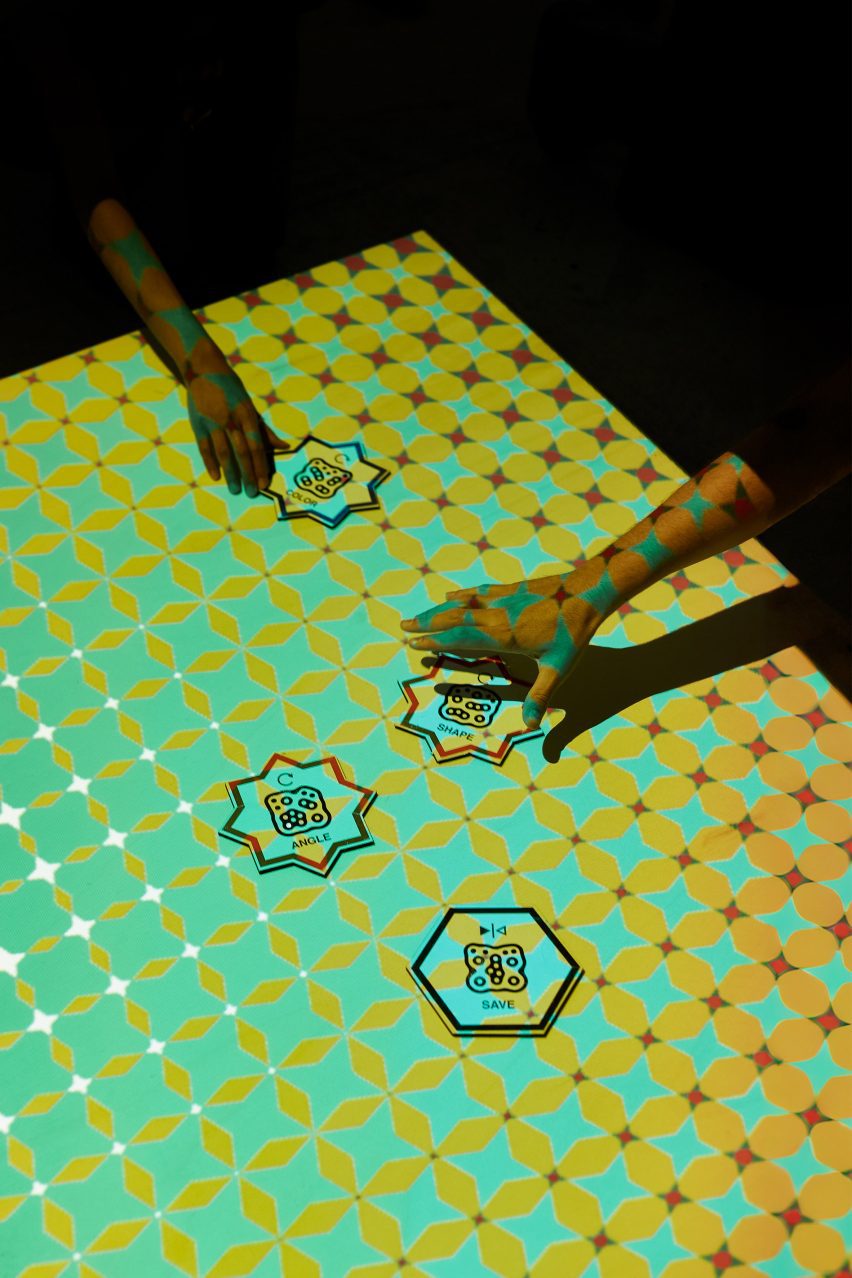
Digital Zellij – Human-machine collaboration for traditional Moroccan craft by Armin Aschenbrenner
“Zellij is the traditional Moroccan craft of cutting and composing mosaic tiles into complex geometric patterns.
“Because of their reliance on mathematical properties, as well as their spiritual and philosophical roots in the materialisation of abstraction, these patterns demonstrate a strong predisposition for digitalisation.
“This master thesis aims to explore whether new use cases for Zellij can be generated by the introduction of parametric digital fabrication technologies.
The outcome of this project is a tangible interface prompting a discussion about the future of Islamic patterns in a hands-on fashion and enabling the development of hybrid fabrication processes – a human-machine collaboration for traditional Moroccan craft.
Student: Armin Aschenbrenner
Course: Master Interaction Design
Tutor: Dr Joëlle Bitton
Email: mail[at]arminaschenbrenner.com
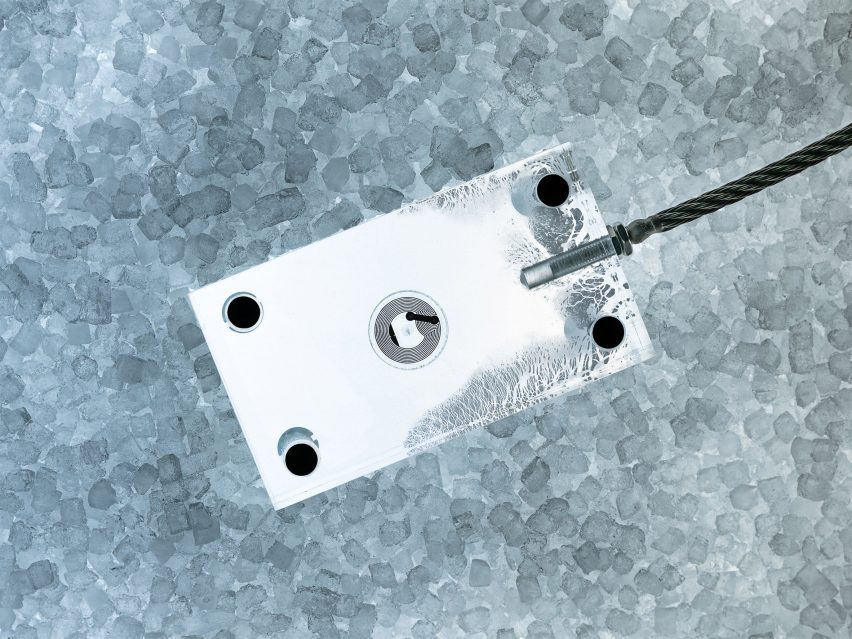
Final Backup – When Data Becomes A Memento by Jonatan Bischof and Elias Diehl
“What happens with your digital data after you die?
“The simple data handling procedure Final Backup enables relatives to preserve the digital legacy of the deceased, or delete it permanently.
“This process clears electronic devices of their digital legacy so they can then be returned to the material cycle.”
Students: Jonatan Bischof and Elias Diehl
Course: Bachelor Industrial Design
Tutors: Susanne Marti and Lisa Ochsenbein
Email: jonatan.bischof[at]gmail.com and elias.e.diehl[at]gmail.com
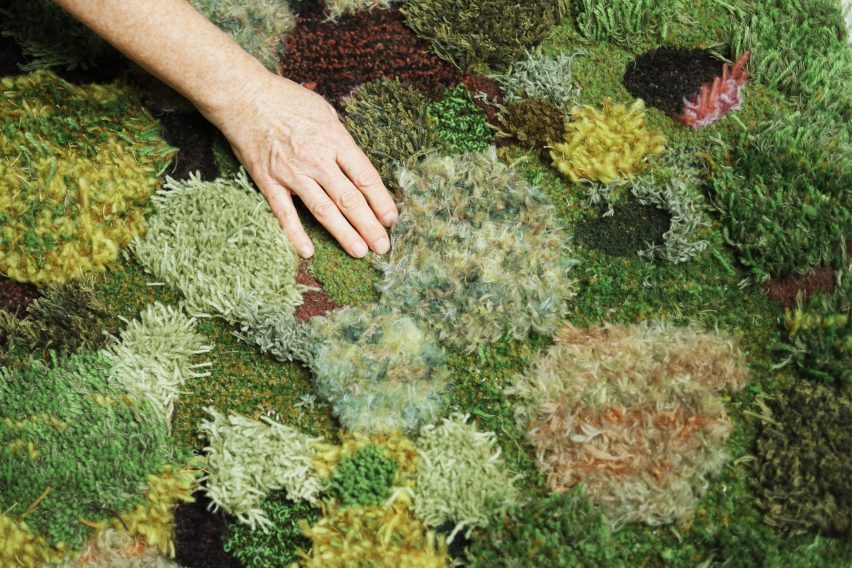
More Moor – An interactive learning environment for multi-sensory exploration of the moor ecosystem by Riva Pinto
“Although moors cover only 3 per cent of the world’s land area, they store twice as much climate-damaging gases in the soil as all the world’s forests combined and form a rare habitat for endangered species.
“In view of their increasing extinction and the acute climate and species crisis, awareness of the global importance of moorlands must be raised.
“This work explores how interactive experiences can contribute to emotional learning about the moor ecosystem and promote engagement in moorland conservation.
“Aspects of ecology, psychology and pedagogy are combined in the design to show how multi-sensory elements in an interactive environment can create emotional connections to moorlands and sustainably strengthen educational strategies for environmental protection.”
Student: Riva Pinto
Course: Master Interaction Design
Tutors: Prof Dr Karmen Franinovic and Rasa Weber
Email: riva.pinto[at]gmx.de
Partnership content
This school show is a partnership between Dezeen and Zurich University of the Arts. Find out more about Dezeen partnership content here.

